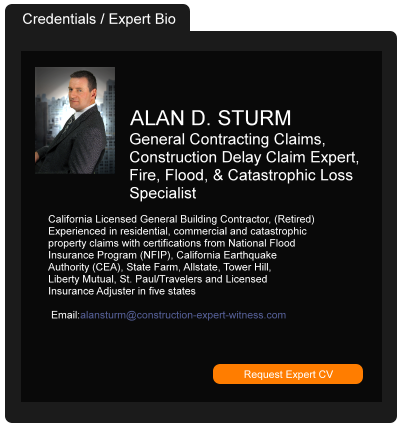Breach of a Construction Contract & An Equitable Remedy?
September 22, 2016 —
David Adelstein – Florida Construction Legal UpdatesIn payment or collection-type lawsuits, the party suing for money sometimes asserts a claim for unjust enrichment or quantum meruit as an alternative equitable remedy to a breach of contract claim. Frankly, sometimes a party will do this as a means to throw everything against the wall hoping something, just something, sticks. However, if there is a contract by and between the parties, equitable claims such as unjust enrichment or quantum meruit will invariably fail. They will fail because a party cannot circumvent a contract simply because their recourse may prove better under an equitable theory. It doesn’t work like that! And, it should not!
Read the court decisionRead the full story...Reprinted courtesy of
David M. Adelstein, Kirwin NorrisMr. Adelstein may be contacted at
dma@kirwinnorris.com
Five-Year Statute of Limitations on Performance-Type Surety Bonds
December 01, 2017 —
David Adelstein - Florida Construction Legal UpdatesThe statute of limitations on a claim against a performance-type bond is 5 years from the breach of the bond, i.e., the bond-principal’s default (based on the same statute of limitations that governs written contracts / obligations). See Fla. Stat. s. 95.11(2)(b). This 5-year statute of limitations is NOT extended and does NOT commence when the surety denies the claim. It commences upon the default of the bond-principal, which would be the act constituting the breach of the bond. This does not mean that the statute of limitations starts when a latent defect is discovered. This is not the case. In dealing with a completed project, the five-year statute of limitations would run when the obligee (beneficiary of the bond) accepted the work. See Federal Insurance Co. v. Southwest Florida Retirement Center, Inc., 707 So.2d 1119, 1121-22 (Fla. 1998).
This 5-year statute of limitations on performance-type surety bonds has recently been explained by the Second District in Lexicon Ins. Co. v. City of Cape Coral, Florida, 42 Fla. L. Weekly D2521a (Fla. 2d DCA 2017), a case where a developer planned on developing a single-family subdivision.
Read the court decisionRead the full story...Reprinted courtesy of
David Adelstein, Florida Construction Legal UpdatesMr. Adelstein may be contacted at
dadelstein@gmail.com
20 Years of BHA at West Coast Casualty's CD Seminar: Chronicling BHA's Innovative Exhibits
May 03, 2018 —
Beverley BevenFlorez-CDJ STAFFThe Bert L. Howe & Associates, Inc., (BHA) exhibit has been a fixture at West Coast Casualty's Construction Defect Seminar since the mid-1990's. Through the years, BHA has updated their display, but no matter what year, you could count on the BHA exhibit to provide a not-to-be-missed experience.
2008-BHA's sleek, rear projection display includes a screen that promotes the firm's capabilities that can be seen throughout the exhibit hall. This would be one of many innovations BHA has brought to the West Coast Casualty seminar.
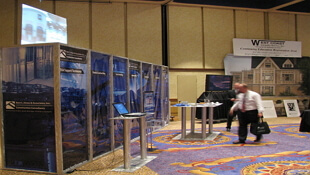
2009-With the success of the rear screen projection, BHA adds additional monitors to provide attendees with more information about BHA.
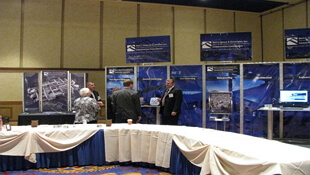
2010-BHA adds an interpretive professional development exhibit targeted to Building Envelope issues allowing adjusters and other non-construction professionals hands on access to the systems and components at the heart of many related such claims.



2011-BHA's Swing for Charity challenge is born.

2012-Always innovating, BHA expands its rear projection and professional development offerings to West Coast attendees.

2013-BHA showcases additional capabilities with a twenty-four foot, custom, convex, immersive video experience.

2014-BHA adds an iPhone display to give a hands-on demonstration of their data collection methods.

2015-BHA's twenty-four foot , custom, convex, immersive video experience was elevated with two additional rear projection screens, reflecting BHA's newest capabilities and services.

2016-BHA dazzles attendees with their new exhibit comprised of more than 15 integrated, high definition, LCD displays. iPads are stationed on tables to conveniently demonstrate BHA's data collection processes.

2017-BHA's Swing for Charity Golf Challenge raised $2,225.00 for the National Coalition for Homeless Veterans and $1,900 for Final Salute.
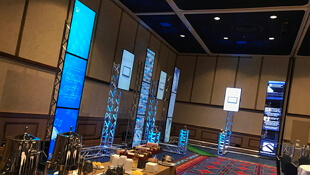
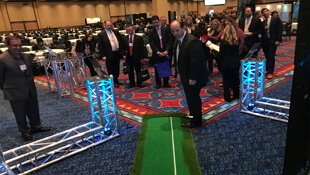
Read the court decisionRead the full story...Reprinted courtesy of
Don’t Put Yourself In The Position Of Defending Against An Accord And Satisfaction Defense
October 10, 2022 —
David Adelstein - Florida Construction Legal UpdatesThe doctrine of accord and satisfaction lives and breathes in disputes including construction disputes. Unfortunately, a contractor, in the case discussed below, found out the hard way after it cashed checks that were accompanied with a letter that clearly indicated the checks were final payment. Once those payments were cashed, there was no “buyer’s remorse” that would allow it to still pursue disputed amounts. Remember this the next time you accept and cash a payment that says on the check it is full and final payment OR is accompanied by a letter that makes clear the payment is full and final payment. If you cash it, there is no second bite out of the apple, so to speak. If you are not interested in the payment being full and final payment, return the check. If you are not sure, either return the check or inquire and get that response in writing. Don’t put yourself in the position of defending against an
accord and satisfaction defense.
Even without the doctrine of accord and satisfaction, the contract between the contractor and owner discussed below made clear that contractor’s acceptance of final payment meant that contractor was unconditionally waiving other claims against the owner, further reinforcing that there would be no second bite out of the apple.
The morale:
(1) read the letter that accompanies a check and do NOT cash a check that indicates it is for final payment unless you are prepared to accept that amount; and
(2) read your contract to understand any contractual obligation that kicks-in with the acceptance of final payment.
Read the court decisionRead the full story...Reprinted courtesy of
David Adelstein, Kirwin Norris, P.A.Mr. Adelstein may be contacted at
dma@kirwinnorris.com
Ninth Circuit Affirms Duty to Defend CERCLA Section 104 (e) Letter
October 10, 2013 —
Tred Eyerly — Insurance Law HawaiiThe Ninth Circuit held there is a duty to defend not only a PRP letter issued by the EPA, but also a section 104 (e) letter. Anderson Brothers, Inc. v. St. Paul Fire and Marine Ins. Co., 2013 U.S. App. LEXIS 18156 (9th Cir. Aug. 30, 2013).
The insured received two letters from the EPA notifying it of potential liability under CERCLA for environmental contamination of the Portland Harbor Superfund Site. The first letter was received in January 2008, and stated that the EPA sought the insured's cooperation in its investigation of the release of hazardous substances at the site. The letter enclosed an extensive, 82-question "Information Request" seeking information about the insured's current and former activities at the site. The letter informed the insured that its voluntary cooperation was sought, but compliance with the Information Request was required by law and failure to respond could result in an enforcement action and civil penalties of $32,500 per day. The insured tendered the 104 (e) letter to St. Paul and requested a defense and indemnity pursuant to the CGL policy. St. Paul declined to provide a defense because the letter did not constitute a "suit," which was required by the policy to trigger the duty to defend.
The second letter from the EPA, received in November 2009, was entitled "General Notice Letter for the Portland Superfund Site" and notified the insured that it was a "potentially responsible party ("PRP").
Read the court decisionRead the full story...Reprinted courtesy of
Tred EyerlyTred Eyerly can be contacted at
te@hawaiilawyer.com
Netherlands’ Developer Presents Modular Homes for Young Professionals
March 05, 2015 —
Beverley BevenFlorez-CDJ STAFFBuilder Magazine reported that Heijmans, a development and building company based in The Netherlands, believes their new modular home, the Heijmans ONE, is a solution for young professionals looking for an affordable, urban option.
“As a designer, I believe prefabricated architecture can beautifully balance quality, experience and economic feasibility,” the project's architect Tim van der Grinten, of Moodbuilders Architecture, told Builder Magazine. “The architecture of this compact house is characterized by natural materials, space, openness and identity. It is a clearly recognizable property that you can make your own.”
Read the court decisionRead the full story...Reprinted courtesy of
The EEOC Targets Construction Industry For Heightened Enforcement
May 15, 2023 —
Meghan Douris & Andrew Scroggins - The Construction SeytSeyfarth Synopsis: On January 10, 2023, the Equal Employment Opportunity Commission (EEOC) released for public comment its
draft 2023-2027 Strategic Enforcement Plan (“SEP”)—a document that will guide the Commission’s enforcement priorities for the next five years. The EEOC’s prior Strategic Plan described how it would pursue its enforcement goals. (See our earlier blog on the Strategic Plan
here). The Strategic Enforcement Plan, on the other hand, describes what the EEOC’s enforcement priorities will be. Earlier actions by the EEOC suggested that it might be turning its attention to the construction industry. In the SEP, the EEOC makes its intentions explicit, putting the construction industry—and especially those receiving federal funding—squarely in its sights.
History of the SEP
The EEOC’s
first SEP covered Fiscal Years 2013-2016 (the EEOC’s fiscal years begin on October 1) and identified six broad subject-matter priorities. The EEOC’s
second SEP set the course for enforcement priorities for FY2017-2022. The
latest proposed SEP, published in the Federal Register for comment for the first time, provides notable additional details that put the employer community on notice of the Commission’s intentions for FY2023-2027.[
1]
Reprinted courtesy of
Meghan Douris, Seyfarth and
Andrew Scroggins, Seyfarth
Ms. Douris may be contacted at mdouris@seyfarth.com
Mr. Scroggins may be contacted ascroggins@seyfarth.com
Read the court decisionRead the full story...Reprinted courtesy of
"On Second Thought"
October 28, 2024 —
Daniel Lund III - LexologyRehearing requests are seldom granted by courts, and when they are, there’s usually something uniquely compelling in the request and the granting.
So is the case in a matter involving monies deposited in the registry of the federal court in New Orleans related to work performed on cleanup after Hurricanes Maria and Irma in the U.S. Virgin Islands. The party depositing monies – which represented subcontract sums paid to it by the general contractor – held back several hundred thousand dollars based on withholding provisions in the various contracts in play. The Court was tasked with evaluating not only a pay-when-paid provision in the subcontract of the claiming party, but also incorporation of the terms of a higher tiered contract which allowed for the withholding.
The Court initially granted summary judgment allowing the monies to be withheld. However, on request for rehearing, it was pointed up that while monies could be retained for purposes of covering attorney’s fees and costs related to litigation initiated by the plaintiff subcontractor’s vendors, there was a particular process for that withholding – and an assertion that the process was not followed.
Read the court decisionRead the full story...Reprinted courtesy of
Daniel Lund III, PhelpsMr. Lund may be contacted at
daniel.lund@phelps.com





























































